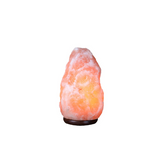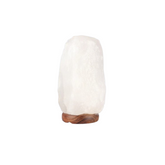Trace Minerals in Himalayan Salt: What They Do for Your Body
Trace Minerals in Himalayan Salt: What They Do for Your Body
Himalayan pink salt isn’t just about its rosy hue or Instagram-worthy aesthetics. It’s packed with over 80 trace minerals that contribute to its unique flavor and potential health benefits. From potassium to iron, these micro-elements play vital roles in your body’s daily functions. In this article, we’ll explore 15 key minerals found in Himalayan salt and how they support your overall well-being.
What Are Trace Minerals and Why Are They Important?
Trace minerals are essential nutrients your body needs in minute amounts for proper physiological function. Despite their small presence, they regulate critical processes such as:
- Immune system regulation
- Nerve transmission
- Hormone production
- Enzyme function
- Bone development
Unlike macrominerals (like calcium or magnesium, which you need in larger quantities), trace minerals are needed in micrograms or milligrams, yet they are indispensable.
15 Essential Trace Minerals in Himalayan Pink Salt
Let’s break down some of the most important trace elements found in Himalayan salt, what they do, and how they impact your body.
1. Iron
- Function: Supports oxygen transport through hemoglobin.
- Benefit: Boosts energy, reduces fatigue.
- Fun Fact: Gives Himalayan salt its pink color.
2. Zinc
- Function: Aids immune response, wound healing.
- Benefit: Enhances immunity and skin health.
3. Magnesium
- Function: Regulates over 300 enzymatic reactions.
- Benefit: Improves sleep, muscle relaxation.
4. Potassium
- Function: Balances fluid levels and nerve signals.
- Benefit: Reduces muscle cramps, supports heart function.
5. Calcium
- Function: Key component of bones and teeth.
- Benefit: Strengthens bones, supports heartbeat.
6. Selenium
- Function: Acts as an antioxidant.
- Benefit: Protects cells from oxidative stress.
7. Copper
- Function: Assists iron absorption and collagen production.
- Benefit: Promotes healthy skin and joints.
8. Manganese
- Function: Supports metabolism and bone health.
- Benefit: Improves joint flexibility.
9. Iodine
- Function: Crucial for thyroid hormone synthesis.
- Benefit: Prevents goiter and improves metabolism.
10. Phosphorus
- Function: Builds DNA and RNA.
- Benefit: Supports tissue growth and repair.
11. Chromium
- Function: Aids in glucose metabolism.
- Benefit: Helps manage blood sugar levels.
12. Molybdenum
- Function: Detoxifies sulfites and helps enzyme function.
- Benefit: Protects against toxins.
13. Cobalt
- Function: Essential part of vitamin B12.
- Benefit: Boosts red blood cell production.
14. Vanadium
- Function: May influence glucose metabolism.
- Benefit: Investigated for anti-diabetic properties.
15. Nickel
- Function: Involved in enzyme activity.
- Benefit: Supports hormone production.
Are These Trace Minerals Bioavailable?
The bioavailability of minerals in Himalayan salt is still debated. While the body absorbs minerals more efficiently from food, small contributions from salt can help meet your daily needs. However, always consume salt in moderation due to its sodium content.
Comparing Table Salt vs. Himalayan Salt
| Feature | Table Salt | Himalayan Salt |
|---|---|---|
| Processing | Highly refined | Minimally processed |
| Additives | May contain anti-caking agents | None (typically) |
| Mineral Content | Mostly sodium chloride | Contains 80+ trace minerals |
| Taste | Neutral | Slightly earthy and rich |
Can Himalayan Salt Replace Supplements?
No. While Himalayan salt contains many trace minerals, the quantities are too small to replace dietary supplements or a nutrient-rich diet. Use it to complement your nutrition, not replace it.
Popular Everyday Uses for Himalayan Salt
- Cooking: Use in place of table salt for added flavor and minerals.
- Bathing: Eases muscle tension and promotes relaxation.
- Inhalation Therapy: Salt inhalers help respiratory issues.
- Salt Lamps: Believed to purify air (though not scientifically proven).
Final Thoughts: Embrace Mineral-Rich Nutrition
Himalayan salt is more than just a kitchen staple – it’s a mineral treasure trove that can elevate both your meals and your health regimen. While not a cure-all, its trace minerals offer subtle yet meaningful support for overall well-being. Pair it with a whole-foods diet and active lifestyle to truly reap the benefits.





